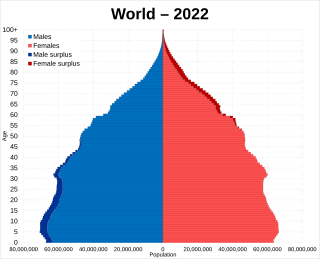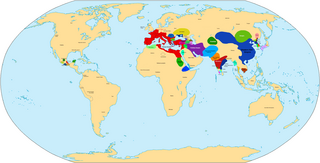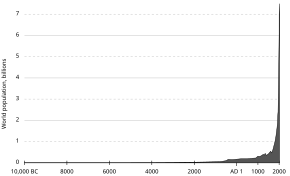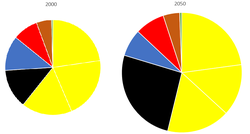
The economy of Chile is a market economy and high-income economy as ranked by the World Bank. The country is considered one of South America's most prosperous nations, leading the region in competitiveness, income per capita, globalization, economic freedom, and low perception of corruption. Although Chile has high economic inequality, as measured by the Gini index, it is close to the regional mean.

The economy of the Czech Republic is a developed export-oriented social market economy based in services, manufacturing, and innovation that maintains a high-income welfare state and the European social model. The Czech Republic participates in the European Single Market as a member of the European Union, and is therefore a part of the economy of the European Union. It uses its own currency, the Czech koruna, instead of the euro. It is a member of the Organisation for Economic Co-operation and Development (OECD). The Czech Republic ranks 16th in inequality-adjusted human development and 24th in World Bank Human Capital Index, ahead of countries such as the United States, the United Kingdom or France. It was described by The Guardian as "one of Europe's most flourishing economies".

Gross domestic product (GDP) is a monetary measure of the market value of all the final goods and services produced in a specific time period by a country or countries. GDP is more often used by the government of a single country to measure its economic health. Due to its complex and subjective nature, this measure is often revised before being considered a reliable indicator.

India is the most populous country in the world with one-sixth of the world's population. According to UN estimates, India overtook China in having the largest population in the world with a population of 1,425,775,850 at the end of April 2023.
Population is the term typically used to refer to the number of people in a single area. Governments conduct a census to quantify the size of a resident population within a given jurisdiction. The term is also applied to non-human animals, microorganisms, and plants, and has specific uses within such fields as ecology and genetics.

The 1900s was a decade that began on January 1, 1900, and ended on December 31, 1909. The Edwardian era (1901–1910) covers a similar span of time. The term "nineteen-hundreds" is sometimes also used to mean the entire century from January 1, 1900, to December 31, 1999.

The economy of France is a highly developed social market economy with notable state participation in strategic sectors. It is the world's seventh-largest economy by nominal GDP and the ninth-largest economy by PPP, constituting around 4% of world GDP. Due to a volatile currency exchange rate, France's GDP as measured in dollars fluctuates sharply. France has a diversified economy, that is dominated by the service sector, whilst the industrial sector accounted for 19.5% of its GDP and the primary sector accounted for the remaining 1.7%. In 2020, France was the largest Foreign Direct Investment recipient in Europe, and Europe's second largest spender in research and development. It was ranked among the 10 most innovative countries in the world by the 2020 Bloomberg Innovation Index, as well as the 15th most competitive nation globally according to the 2019 Global Competitiveness Report. It was the fifth-largest trading nation in the world. France is also the most visited destination in the world, as well as the European Union's leading agricultural power.

The world economy or global economy is the economy of all humans in the world, referring to the global economic system, which includes all economic activities conducted both within and between nations, including production, consumption, economic management, work in general, financial transactions and trade of goods and services. In some contexts, the two terms are distinct: the "international" or "global economy" is measured separately and distinguished from national economies, while the "world economy" is simply an aggregate of the separate countries' measurements. Beyond the minimum standard concerning value in production, use and exchange, the definitions, representations, models and valuations of the world economy vary widely. It is inseparable from the geography and ecology of planet Earth.
The economies of Canada and the United States are similar because both are developed countries. While both countries feature in the top ten economies in the world in 2022, the U.S. is the largest economy in the world, with US$24.8 trillion, with Canada ranking ninth at US$2.2 trillion.
Population decline, also known as depopulation, is a reduction in a human population size. Throughout history, Earth's total human population has continued to grow; however, current projections suggest that this long-term trend of steady population growth may be coming to an end.

Population growth is the increase in the number of people in a population or dispersed group. Actual global human population growth amounts to around 83 million annually, or 1.1% per year. The global population has grown from 1 billion in 1800 to 7.9 billion in 2020. The UN projected population to keep growing, and estimates have put the total population at 8.6 billion by mid-2030, 9.8 billion by mid-2050 and 11.2 billion by 2100. However, some academics outside the UN have increasingly developed human population models that account for additional downward pressures on population growth; in such a scenario population would peak before 2100. Others have challenged many recent population projections as having underestimated population growth.
This is the Economic history of the Indian subcontinent. It includes the economic timeline of the region, from the ancient era to the present, and briefly summarizes the data presented in the Economic history of India and List of regions by past GDP (PPP) articles.
Angus Maddison was a distinguished British economist specialising in quantitative macro economic history, including the measurement and analysis of economic growth and development.

Demographic history is the reconstructed record of human population in the past. Given the lack of population records prior to the 1950s, there are many gaps in our record of demographic history. Historical demographers must make do with estimates, models and extrapolations. For the demographic methodology, see historical demography.

The continent of Asia covers 29.4% of the Earth's land area and has a population of around 4.75 billion, accounting for about 60% of the world population. The combined population of both China and India is estimated to be over 2.8 billion people as of 2022. Asia's population is projected to grow to 5.25 billion by 2055, or about 54% of projected world population at that time. Population growth in Asia was close to 0.55% p.a. as of 2022, with highly disparate rates. Many Western Asian and South Asian countries have growth rates above world average, notably Pakistan at 2% p.a., while China had a small decrease of –0.06% and India had a 0.6% increase in 2022.

In world demographics, the world population is the total number of humans currently living. It was estimated by the United Nations to have exceeded eight billion in mid-November 2022. It took around 300,000 years of human prehistory and history for the human population to reach a billion and only 222 years more to reach 8 billion.

Earth has a human population of over 8 billion as of 2024, with an overall population density of 50 people per km2. Nearly 60% of the world's population lives in Asia, with almost 2.8 billion in the countries of China and India combined. The percentage shares of China, India and rest of South Asia of the world population have remained at similar levels for the last few thousand years of recorded history. The world's literacy rate has increased dramatically in the last 40 years, from 66.7% in 1979 to 86.3% today. Lower literacy levels are mostly attributable to poverty. Lower literacy rates are found mostly in South Asia and Sub-Saharan Africa.

The 0s began on January 1, AD 1 and ended on December 31, AD 9, covering the first nine years of the Common Era. It is one of two "0-to-9" decade-like timespans that contain nine years, along with the 0s BC.














